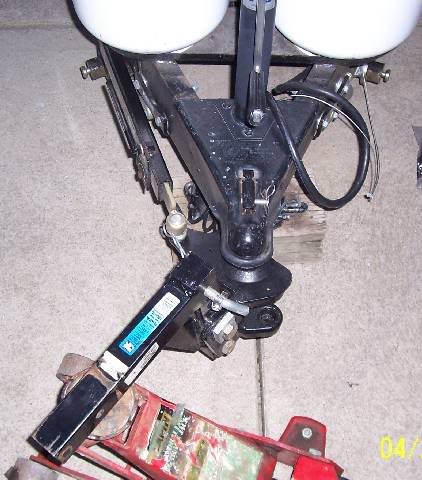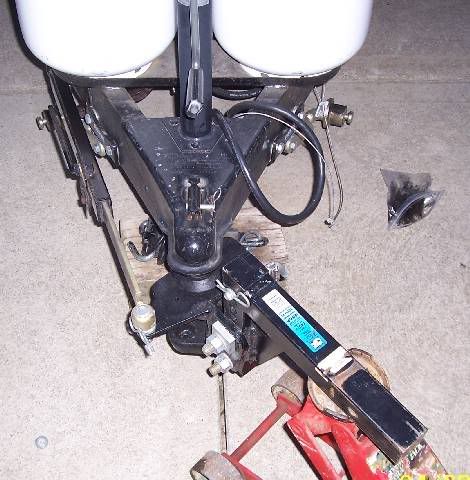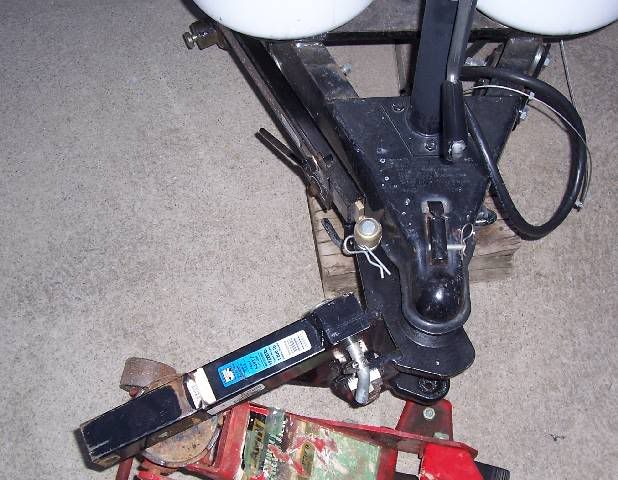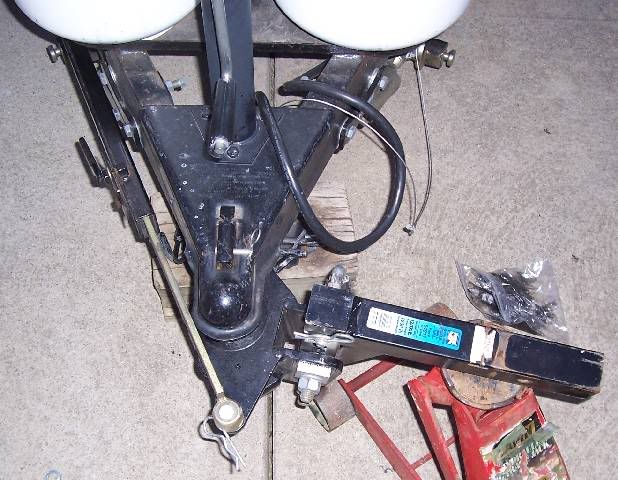Forum Discussion
JBarca
Mar 07, 2015Nomad II
Hi Guys and Gals,
This topics comes up often. I'll offer some of my thoughts.
When we bought our first pop up years ago, the dealer installed a friction sway bar and during our PDI the dealer told my wife and I the same thing, "Do not ever back up with the bar on". He had convinced my wife the hitch would explode if I ever attempted reverse...
This is also the same dealer that told us, "Never ever pull out the emergency break away cable. You do that and you have to pull the wheels off to reset the brakes and unlock them if you ever do"
Well, I just listened. After the emergency break away switch deal I knew the technical background of who I was dealing with. This guy is well...
On a weight carrying draw bar like a popup, they are more close coupled then on a WD hitch. As shown in the prior posters pic's the angles can be very extreme and not present an interference. However not all set up's are the same.
See here on a WD hitch. The WD shank is longer and can change the turning angles. Different conditions now.
Here is a right turn, 45 deg, no problem

A left turn, 45 deg, no problem.

Now a 65 deg right turn. There is an interference. The mini ball will crash into the A frame. Friction sway bar to not, that is the limit of this hitch as that arm on the head will hit regardless.

Now a 75 degree left turn. This will bend the bar on the coupler. And in this position my rear fender would almost be into the A frame. Since the shank is longer, I can turn left sharper then the popup with a short draw bar.

Point: Know the limits of your rig. Not all setups are the same. Under controlled conditions with a spotter, slowly back into the extremes, stop, get out and look. Memorize that position the sway bar is in. Then get back in the truck and look in the rear view mirrors and memorize what the trailer looks like at that extreme angle. Now armed with understanding, don't get that far going either forward or backwards.
On my rig, I can turn sharp enough going forwards to create the same issue as backing up.
The friction sway bar does not know which direction the TV is going, forward or backwards. If you approach the bind spots, forward or backwards, it can hit. It is "easier" for most rigs to get into these tight turns when backing up. So, the fear factor warning comes. Rather then explaining what is going on and why, some dealers use the fear factor explanation one size fits all and says, don't ever back up with the bar on. Now the owner leaves with no understanding of their hitch other than this extreme warning.
Another way the bar can get bent is the fast, extreme buckle of the bar where it can grab and bend the bar trying to collapse inwards. The conditions have to be right, very tight setting, collapsing very fast when the bar is fairly extended and the pads grab. The pads are bound enough that it is easier to bend the bar then to slip. This is condition LarryJ was explaining.
Hope this helps explain about the warnings and where they come from.
John
This topics comes up often. I'll offer some of my thoughts.
When we bought our first pop up years ago, the dealer installed a friction sway bar and during our PDI the dealer told my wife and I the same thing, "Do not ever back up with the bar on". He had convinced my wife the hitch would explode if I ever attempted reverse...
This is also the same dealer that told us, "Never ever pull out the emergency break away cable. You do that and you have to pull the wheels off to reset the brakes and unlock them if you ever do"
Well, I just listened. After the emergency break away switch deal I knew the technical background of who I was dealing with. This guy is well...
On a weight carrying draw bar like a popup, they are more close coupled then on a WD hitch. As shown in the prior posters pic's the angles can be very extreme and not present an interference. However not all set up's are the same.
See here on a WD hitch. The WD shank is longer and can change the turning angles. Different conditions now.
Here is a right turn, 45 deg, no problem

A left turn, 45 deg, no problem.

Now a 65 deg right turn. There is an interference. The mini ball will crash into the A frame. Friction sway bar to not, that is the limit of this hitch as that arm on the head will hit regardless.

Now a 75 degree left turn. This will bend the bar on the coupler. And in this position my rear fender would almost be into the A frame. Since the shank is longer, I can turn left sharper then the popup with a short draw bar.

Point: Know the limits of your rig. Not all setups are the same. Under controlled conditions with a spotter, slowly back into the extremes, stop, get out and look. Memorize that position the sway bar is in. Then get back in the truck and look in the rear view mirrors and memorize what the trailer looks like at that extreme angle. Now armed with understanding, don't get that far going either forward or backwards.
On my rig, I can turn sharp enough going forwards to create the same issue as backing up.
The friction sway bar does not know which direction the TV is going, forward or backwards. If you approach the bind spots, forward or backwards, it can hit. It is "easier" for most rigs to get into these tight turns when backing up. So, the fear factor warning comes. Rather then explaining what is going on and why, some dealers use the fear factor explanation one size fits all and says, don't ever back up with the bar on. Now the owner leaves with no understanding of their hitch other than this extreme warning.
Another way the bar can get bent is the fast, extreme buckle of the bar where it can grab and bend the bar trying to collapse inwards. The conditions have to be right, very tight setting, collapsing very fast when the bar is fairly extended and the pads grab. The pads are bound enough that it is easier to bend the bar then to slip. This is condition LarryJ was explaining.
Hope this helps explain about the warnings and where they come from.
John
About Travel Trailer Group
44,025 PostsLatest Activity: Feb 18, 2025